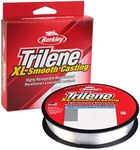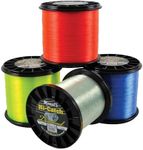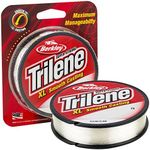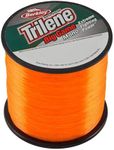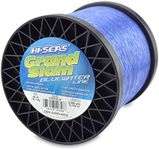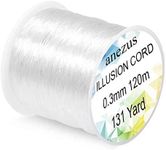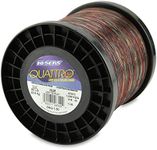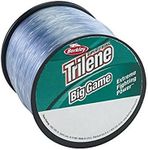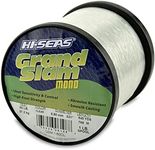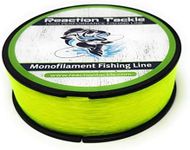Buying Guide for the Best Monofilament Lines
Choosing the right monofilament fishing line can significantly impact your fishing experience. Monofilament lines are popular due to their versatility, ease of use, and affordability. When selecting a monofilament line, it's important to consider several key specifications to ensure you get the best fit for your fishing needs. Understanding these specs will help you make an informed decision and enhance your fishing success.Line Strength (Pound Test)Line strength, often referred to as pound test, indicates the amount of weight a fishing line can handle before breaking. This is crucial because it determines the size and type of fish you can catch. Line strength typically ranges from 2 lbs to over 100 lbs. For small freshwater fish like trout or panfish, a 2-6 lb test line is suitable. For medium-sized fish like bass or walleye, a 6-12 lb test line is ideal. For larger fish like pike or catfish, a 12-20 lb test line or higher is recommended. Choose a line strength based on the species you are targeting and the fishing environment.
Line DiameterLine diameter refers to the thickness of the fishing line. It affects the line's visibility in the water, casting distance, and how it handles. Thinner lines are less visible to fish and can cast further, but they may be less durable. Thicker lines are more durable and can handle more abrasion but may be more visible and harder to cast long distances. If you are fishing in clear water or targeting skittish fish, a thinner line is preferable. For fishing in heavy cover or targeting larger, stronger fish, a thicker line is better.
Line StretchLine stretch refers to how much a fishing line can stretch under pressure. Monofilament lines typically have more stretch compared to other types of lines. This can be beneficial as it provides shock absorption, reducing the chances of the line breaking when a fish strikes. However, too much stretch can reduce sensitivity, making it harder to detect bites. If you need more sensitivity for detecting light bites, choose a line with less stretch. For situations where shock absorption is more important, such as when fighting larger fish, a line with more stretch is advantageous.
Abrasion ResistanceAbrasion resistance is the line's ability to withstand wear and tear from contact with rocks, logs, and other underwater structures. This is important for maintaining the integrity of the line during fishing. High abrasion resistance is crucial when fishing in areas with a lot of cover or structure. If you are fishing in open water with minimal obstacles, abrasion resistance may be less of a concern. Consider the fishing environment and choose a line with appropriate abrasion resistance to ensure durability and reliability.
Line ColorLine color can affect the visibility of the line to both the angler and the fish. Monofilament lines come in various colors, including clear, green, blue, and high-visibility options like yellow or orange. Clear lines are less visible to fish and are ideal for clear water conditions. Green lines blend well with underwater vegetation, making them less noticeable. High-visibility lines are easier for anglers to see above water, which can be helpful for detecting bites and managing the line. Choose a line color based on the water conditions and your personal preference for visibility.
